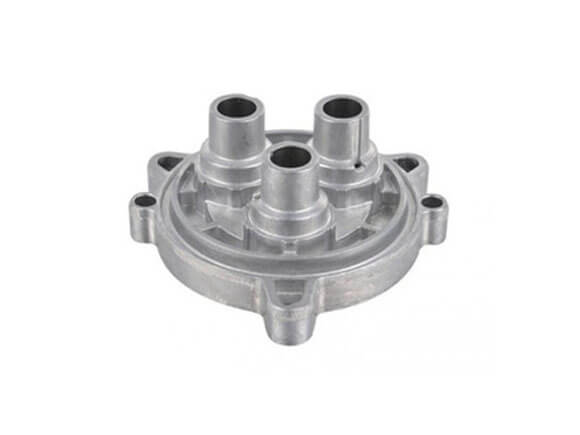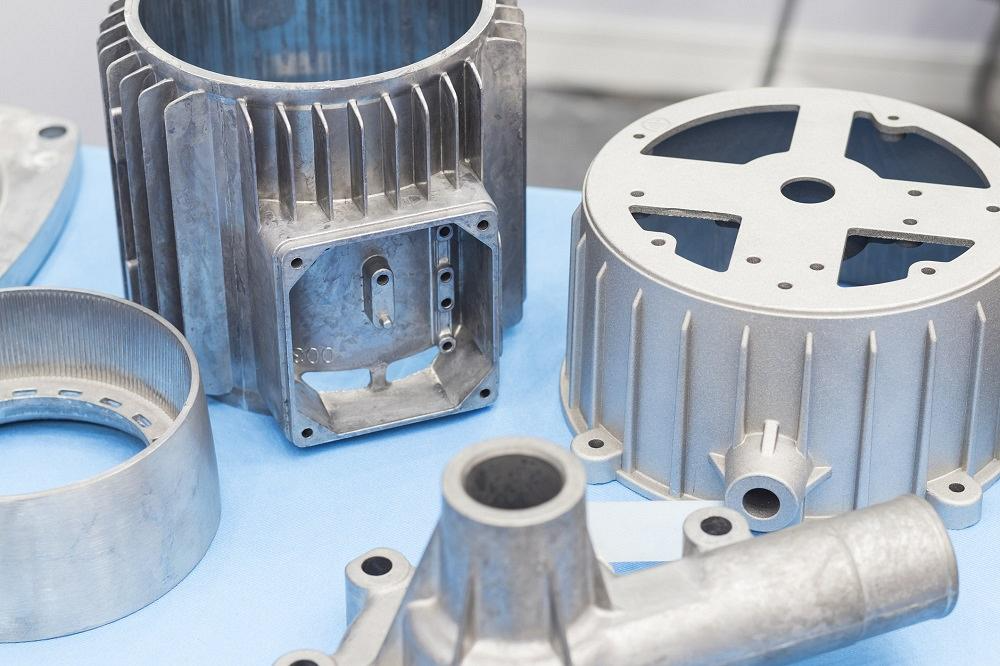How aluminum casting plays a vital role in today’s manufacturing industry
Exploring the Ingenious Procedures Behind Modern Aluminum Factory Procedures
Modern aluminum shop operations are going through considerable transformation. Automation and AI are improving production techniques, enhancing both effectiveness and precision. The combination of 3D printing is improving mold and mildew development, while sustainability methods are becoming a lot more vital. Each of these advancements plays an essential duty in redefining the sector. The ramifications of these modifications extend past mere manufacturing performance. What opportunities and obstacles lie ahead for aluminum foundries in this advancing landscape?
The Function of Automation in Aluminum Foundries

Additionally, automation adds to boosted safety and security requirements within the shop setting. By moving dangerous tasks to equipments, human employees can concentrate on supervisory functions and quality assurance, decreasing the danger of accidents. In addition, information analytics stemmed from automated procedures give useful insights into operational performance, bring about better decision-making and constant improvement. As the need for aluminum items expands, the adoption of automation technologies will likely broaden, even more changing the landscape of light weight aluminum factory procedures.
Improvements in Casting Technologies
Current developments in casting modern technologies are transforming light weight aluminum foundry procedures. Developments such as 3D printing integration, advanced alloy solutions, and automated process optimization are enhancing effectiveness and item quality. These advancements are essential in satisfying the evolving demands of the sector.
3D Printing Assimilation
Integrating 3D printing modern technology right into aluminum factory operations has actually revolutionized conventional casting techniques, enhancing both performance and precision. This cutting-edge approach enables for the quick production of intricate molds and cores, substantially decreasing lead times and product waste. By utilizing additive production, shops can produce complex geometries that were formerly tough or impossible to achieve with standard techniques. The flexibility of 3D printing also allows quick style adjustments, cultivating a more nimble production process. Furthermore, this combination sustains using lightweight structures, which is progressively essential in markets such as vehicle and aerospace. As light weight aluminum foundries continue to adopt 3D printing, they position themselves at the forefront of technological innovation, driving renovations in product high quality and operational capabilities.
Advanced Alloy Formulations
The development of innovative alloy formulations has considerably improved spreading technologies in light weight aluminum foundry procedures. These solutions incorporate various aspects, such as magnesium, silicon, and copper, to improve mechanical buildings and thermal resistance. By tailoring the composition of aluminum alloys, makers can achieve certain performance features that satisfy the needs of diverse applications, from automotive elements to aerospace structures. The usage of sophisticated alloys additionally adds to reduced weight and boosted stamina, which are vital consider contemporary engineering. In addition, developments in alloy growth allow better fluidness during casting, leading to boosted surface area coatings and minimized flaws. In general, advanced alloy formulations stand for a substantial jump forward, positioning light weight aluminum factories to meet the progressing demands of different industries successfully.
Automated Refine Optimization
Developments in casting technologies have actually led the way for automated procedure improvement in aluminum foundry operations. By incorporating sophisticated software program and real-time information analytics, factories can currently simplify manufacturing procedures and improve quality assurance. Automated systems check variables such as cooling, temperature, and stress rates, enabling for prompt modifications that decrease flaws and waste. Additionally, device understanding formulas analyze historic performance information to forecast ideal setups, thereby boosting efficiency and decreasing cycle times. Robotics additionally play a substantial duty, dealing with recurring jobs that boost safety and security and precision. Generally, these innovations not just drive functional performance however likewise enable factories to fulfill the expanding need for high-grade aluminum components in different markets.
Smart Production and Sector 4.0 Combination
The integration of Smart Production and Sector 4.0 within light weight aluminum factories is transforming operational performance. By leveraging IoT modern technologies, automation, and robotics, shops can optimize manufacturing procedures and minimize downtime. Furthermore, information analytics provides vital understandings that boost decision-making and drive continual renovation.
IoT in Shop Workflow
As producers progressively welcome the Web of Things (IoT), shop operations are experiencing a transformative change towards clever production and Market 4.0 assimilation. aluminum casting. IoT technologies enable real-time information collection and evaluation, improving decision-making processes and functional effectiveness. Sensing units and linked tools keep track of tools performance, product usage, and ecological conditions, enabling for aggressive maintenance and source optimization. This connection cultivates a more dexterous production setting, where adjustments can be made quickly in response to market look at more info demands. Furthermore, IoT assists in improved traceability and quality assurance, as information from the whole manufacturing cycle can be easily accessed and evaluated. Overall, the combination of IoT in foundry operations significantly improves productivity and drives advancement in light weight aluminum manufacturing procedures
Automation and Robotics Assimilation
Automation and robotics combination is transforming light weight aluminum shop procedures by boosting performance and accuracy. This transformative method enhances processes such as molding, pouring, and completing, decreasing human error and enhancing output uniformity. By using advanced robot systems, factories can accomplish higher production rates while preserving rigid high quality criteria. Automated systems additionally allow real-time tracking and flexible control, enabling for speedy adjustments to manufacturing parameters. Additionally, the integration of robotics lessens labor expenses and minimizes security risks linked with hand-operated handling of liquified steel. As shops embrace clever manufacturing principles inherent in Sector 4.0, the harmony in between automation and robotics solidifies their affordable side, leading the way for lasting growth and development in the aluminum casting industry.
Information Analytics for Performance
Harnessing information analytics significantly boosts efficiency within light weight aluminum shop operations, straightening with smart production and Market 4.0 concepts. By leveraging real-time information collection and analysis, factories can keep track of manufacturing procedures, anticipate devices failings, and enhance source allotment. This data-driven strategy facilitates informative decision-making, allowing managers to boost and recognize bottlenecks process. In addition, anticipating analytics equips foundries to expect market needs, thus decreasing waste and ensuring timely product delivery. Combination of information analytics with IoT tools enhances operational exposure, promoting an aggressive maintenance society. Ultimately, carrying out these innovative logical methods not just boosts productivity however additionally drives technology, positioning light weight informative post aluminum factories to satisfy the advancing needs of the industry while preserving one-upmanships in a rapidly altering landscape.
Lasting Practices in Aluminum Casting
While the light weight aluminum spreading market has actually commonly dealt with ecological obstacles, many factories are currently taking on lasting techniques to mitigate their impact (aluminum casting). A substantial focus has been on recycling aluminum scrap, which not only reduces waste but also preserves power contrasted to main light weight aluminum production. Innovative melting innovations, such as induction heating systems, boost power efficiency and reduced greenhouse gas exhausts
In addition, factories are carrying out closed-loop water systems to minimize water intake and decrease thermal air pollution. Using eco-friendly binders in mold-making processes is acquiring traction, more reducing unsafe exhausts.
Moreover, some facilities are purchasing renewable resource resources to power procedures, lining up with global sustainability objectives. By integrating these methods, the aluminum spreading sector is developing toward a much more environmentally accountable future, demonstrating that economic growth can coexist with eco-friendly stewardship - aluminum casting. These efforts mirror a commitment to sustainability and the value of ecological liability in manufacturing
Quality Assurance Innovations
As the aluminum casting market advancements in the direction of sustainability, the relevance of quality assurance advancements becomes significantly obvious. Modern aluminum factories are taking on advanced innovations to enhance their quality control processes. Methods such as real-time surveillance and information analytics enable suppliers to discover disparities and problems early in the manufacturing cycle. Executing automatic assessment systems equipped with equipment discovering algorithms warranties that items meet stringent quality standards while decreasing human error.
In addition, the assimilation of non-destructive testing techniques, such as radiographic and ultrasonic inspections, provides much deeper understandings into the stability of castings without harming the product. These developments not just enhance product integrity but likewise lower waste, lining up with sustainability objectives. Additionally, the adoption of standard top quality frameworks helps streamline operations throughout various factories, ensuring consistency in output. Collectively, these improvements are improving high quality control, fostering a culture of quality within the aluminum casting industry.
Future Fads in Light Weight Aluminum Factory Workflow
What developments lie in advance for light weight aluminum foundry procedures? The future of aluminum factories is positioned for improvement through innovations in automation, man-made knowledge, and lasting practices. The assimilation of robotics and automated systems is expected to boost performance and accuracy in the spreading procedures, minimizing human mistake and labor costs. In addition, AI-driven analytics will certainly allow real-time surveillance and anticipating upkeep, maximizing functional efficiency and reducing downtime.
Sustainability remains a focal factor, with shops significantly embracing eco-friendly techniques, such as utilizing recycled aluminum and developing low-emission melting technologies. Innovations in 3D printing are additionally anticipated to reinvent mold-making, permitting for complex geometries and decreased material waste. As the sector welcomes digitalization, data-driven decision-making will certainly end up being essential, enabling foundries to respond promptly to market needs. Collectively, these fads assure to redefine aluminum shop operations, making them a lot more efficient, sustainable, and adaptable to future obstacles.

Frequently Asked Inquiries
What Safety Steps Are Carried Out in Aluminum Factory Workflow?
Light weight aluminum factory procedures apply different security steps, consisting of individual safety tools, air flow systems to take care of fumes, normal security training, emergency action plans, and strict tracking of temperature and devices to stop accidents and warranty employee security.
How Do Shops Handle Labor Force Educating for New Technologies?

What Materials Are Generally Reused in Aluminum Foundries?
Light weight aluminum factories typically reuse scrap light weight aluminum, consisting of post-consumer products like beverage containers, automotive components, and building products. This reusing process minimizes waste and preserves sources, adding to a more sustainable aluminum manufacturing market.
Just How Does Aluminum Casting Impact the Environment?
Light weight aluminum casting effects the setting via energy-intensive procedures, greenhouse gas exhausts, and possible neighborhood pollution. Developments in reusing and lasting practices can reduce these effects, advertising a much more environmentally friendly approach to light weight aluminum production.
What Are the Common Lead Times for Aluminum Spreading Projects?
Regular preparation for light weight aluminum casting tasks vary significantly, typically ranging from two to six weeks. Factors affecting these timelines consist of complexity, order size, and product availability, impacting general manufacturing routines in foundry operations.
Automation increasingly plays a crucial duty in light weight aluminum factories, boosting efficiency and accuracy in the manufacturing process. Innovations in casting modern technologies have led the method for automatic process improvement in light weight aluminum factory procedures. Taking advantage of data analytics greatly enhances efficiency within aluminum shop procedures, lining up with smart production and Industry 4.0 principles. A significant emphasis has actually been on reusing aluminum scrap, which not only minimizes waste yet also preserves energy contrasted to main light weight aluminum manufacturing. Aluminum shops frequently reuse scrap light weight aluminum, including post-consumer items like drink cans, auto parts, and construction products.